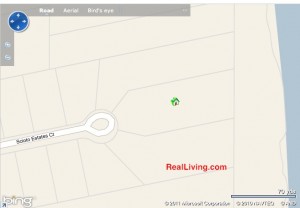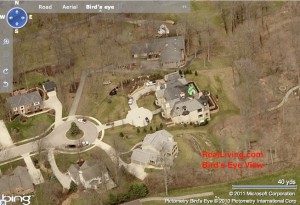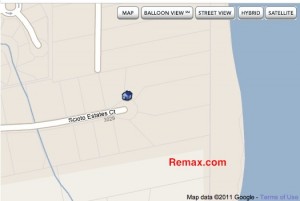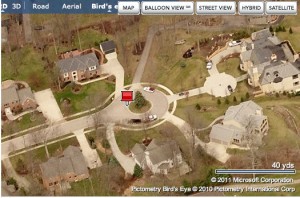Real Living is among the fastest growing franchise groups in the United States and have a track record of of impressive accomplishments. Today they represent more than 400 offices and more than 10,000 agents. Entrepreneur Magazine, Inman News,
Swanepol Trends Report and a 96% satisfaction rating (
As surveyed by QSC) among consumers are among the accolades. In an announcement today, they unveiled a new consumer facing franchise website developed by
industry technology leader, LPS. LPS has been the technology provider for many leading broker organizations, including the supplier of website services to Home Services of America, a Berkshire Hathaway company.
WAV Group sees this a a major game changer among Broker and Franchise websites. Real Living has a large footprint of brokerages across America, that will now be laced together through this new web property. Strategically, they have taken a page out of the RE/MAX and Century 21 web strategy handbook,
powered by eNeighborhoods. The model is that consumers who search on the RealLiving.com website are dynamically and seamlessly redirected to a local office website where IDX listings are viewed.
According to WAV Group WIN Reports, Realliving.com is already climbing the rankings of the most popular consumer real estate websites in the country. According to Experian Hitwise, Realliving.com moved up from a traffic ranking of 340 in the United States to a ranking of 311 in a matter of 2 weeks, reporting a unique visitor count of just over 39,000 visitors a week. They have seen an even more dramatic lift in page views, which relates directly to engagement. Again, over a two week period, realliving.com has moved from a ranking of 433 in America up to 373 with a promising result of 211,000 page views per week. In looking at the success of other LPS driven web properties like edinarealty.com and socalmls.com, our forecast is that they will drive higher on this performance over time as the new site engages consumers at a deeper level as a result of the deep property centric information provided around each listing. This is already bearing out in the Time Per visit category where realliving.com has moved from a rank of 815 up to 596 in the real estate category with an average time per visit of just under 10 minutes. As a benchmark, SocalMLS.com is the top real estate website in the United States in time of visit of 56 minutes. (note: SoCALMLS is also powered by LPS)
Key new features on the site include:
- Social Network integration to share property on Facebook, linkedin, twitter, etc
- Alll IDX data
- WalkScore
- Housing Values, area demographics, economic data, school information, environmental, quality of live, mapping
- Mortgage information
- Rate this house (lets consumers keep track of their favorite homes)
Listing Syndication for Real Living is now being managed by LPS Data Vault rather than other syndication providers, Point2 or ListHub. According to Matt Kaufman of Real Living, Data Vault has many advantages that meet their needs including minimizing the complexity of directing consumers to the desired listing detail page; economic advantages; robust reporting on traffic sources across syndication sites, and most importantly - Data Vault has a full featured data rights management platform that allows RealLiving to keep control of their listing information out on the syndication sites and control the timelines and accuracy of those listings.
Here is the press release:
Real Living Rolls Out New Technology Platform for Brokers and Agents and Launches an All New www.RealLiving.com for Consumers
© Business Wire 2011
2011-01-25 14:34:03 -
Real Living, one of the nation’s most innovative national real estate franchisors, today announced that it has launched a bold new technology initiative, Web strategy and online platform for brokers and agents.
Central to the strategy, Real Living also announced it has launched an all new national site,
www.realliving.com : , that now gives home buyers and sellers
more search options while also providing the latest in mapping technology and rich community information for greater context and a better overall search experience.
As part of its Web strategy, all of the features found in the national www.RealLiving.com : site extend across the entire platform to power local websites that are provided to all Real Living brokers and agents.
Some of these features include: powerful and flexible listing search options, nationwide community and housing market data, social media integration, interactive marketing tools, and more. The company will be providing ongoing enhancements to its platform, with major new releases occurring quarterly.
“We didn’t just launch a new website: Real Living has taken a totally different approach to our Web strategy,” said Real Living President Harley E. Rouda, Jr. “At the national level, our site’s goal is to attract consumers, then seamlessly drive them to local broker or agent sites as quickly as possible, or first and fast, as we like to say,” Rouda added.
“As simple and straightforward as this sounds, historically national real estate companies have been more concerned about keeping consumers on their national sites as long as possible,” Rouda added. “Through our new technology initiative, Real Living today is taking a bold and exciting step to change that way of thinking by directing home buyers and sellers to our brokers and agents sites that are filled with local listings and content.”
For Consumers
Unlike many real estate sites that emphasize technical features at the expense of customer usability, Real Living’s online presence serves buyers and sellers with a refreshing mix of innovation and practicality, offering.
- A listing search developed for the way people really think about real estate. Real Living makes it easier than ever for buyers to find the homes they want with traditional feature and price search options complemented by intuitive map search options, as well as searches by neighborhood, school area, address and street names. Keyword searches of listing descriptions, niche search pages for property types and new search options emerging based upon user behavior, have also been integrated.
- Rich and deep information on local communities across the nation, with details on area home values, property appreciation, the local economy, environment, quality of life, schools and more, compared to city, county and national figures. Home buyers and sellers will find this key information available on every listing’s page, as well as open for general search and community comparison, to give them real context for each home they are considering.
- More options than ever to openly share listings and content on social networks with friends and family, and to privately share listings, house ratings and commentary with their Real Living sales professional through their own RealLiving.com account.
- Access to listings and more via mobile technology that matches and optimizes the information to display to the smart phone in use.
For Brokers and Agents
Real Living’s Internet strategy is to provide a customizable platform for brokers and agents that is continuously being updated while providing consumers with a more consistent online experience since brokers and agents are now using the same platform. Features and benefits of the new platform include.
- A focus on driving consumers, at every opportunity, directly from the national site to a local broker or agent site where they have the opportunity to work with a local real estate professional.
- Each broker and agent is provided a robust website that leverages the same features of the national site, with a local focus.
- A Lead Management Platform that undergoes regular analysis, evolution and improvement. Features include lead notification via cell phone or e-mail, flexible lead-routing options, detailed lead-activity reports for agents and brokers, and enhanced integration with lead incubation and marketing systems.
- Comprehensive E-Marketing - from an automated monthly electronic newsletter with more than 50 pre-built targeted marketing campaigns, to animated home tours, flyers postcards, professional printing and fulfillment. Additionally, the site enables real estate professionals to post and share information on social media sites.
- Real Living Business Center - RealLiving.com integrates its public website with the company’s intranet site to enable brokers and agents to manage leads, develop and maintain their websites, store online files, provide easy access to marketing materials and e-marketing systems.
Real Living’s new technology platform and www.RealLiving.com :

were developed in conjunction with LPS Real Estate Group ( www.LPSREG.com :

), one of the foremost developers of real estate technology and tools for brokers, agents and consumers.
“We are very pleased with our new technology platform, which is the first of its kind in the real estate industry,” said Matt Kaufman, director of Internet marketing for Real Living. “We’ve worked closely with LPS over the past several months to deliver a robust platform that will continue to grow and evolve, while bringing incredible amounts of community data and mapping technology down to the broker and agent level.”
About Real Living
Real Living is a full-service real estate brokerage franchise company with a comprehensive and integrated suite of resources and services for franchisees and their sales professionals, as well as the consumers who work with them. The Real Living brand and its innovative concepts were recognized as one of the best by Entrepreneur magazine; won the Inman Innovator Award, and was named “The Most Promising New National Brand” by the Swanepoel TRENDS Report. Real Living is an affiliate of Brookfield Residential Property Services, a leading global provider of real estate and relocation services, technology, and knowledge. In 2010, Real Living maintained an industry-leading customer satisfaction rating of 96 percent based upon research by an independent research firm. For more information, visit
www.realliving.com :

.




